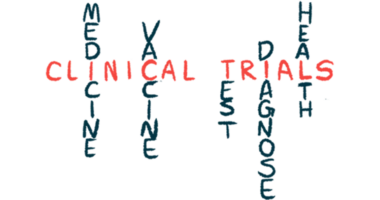Roctavian, Gene Therapy for Severe Hem A, Safely Raises FVIII Levels

Treatment with the experimental gene therapy Roctavian (valoctocogene roxaparvovec) significantly increased factor VIII levels in men with severe hemophilia A treated in the Phase 3 GENEr8-1 trial and with reasonable safety, findings at one and two years post-treatment show.
While declines in these levels were evident over time, significantly fewer bleeding events and a significantly lesser use preventive factor replacement therapy were seen in most patients for up to two years, its researchers noted.
“Overall, the risk-benefit profile appears favorable; we look forward to learning more about the long-term durability and safety of the treatment as we continue to follow the participants in this study,” they added.
Full results from GENEr8-1 are detailed in the study “Valoctocogene Roxaparvovec Gene Therapy for Hemophilia A,” published in The New England Journal of Medicine. The study was funded by BioMarin Pharmaceutical, the company developing Roctavian.
In hemophilia A, the body is unable to produce the clotting protein called factor VIII (FVIII) due to mutations in the gene that provides instructions for making the protein. Roctavian is designed to deliver a working copy of this gene to cells in the liver using an engineered viral vector.
GENEr8-1 (NCT03370913) enrolled 134 men with severe hemophilia A, meaning those with FVIII activity levels of 1 international unit (IU) per deciliter or lower. At the trial’s start, all were being treated with prophylactic (preventive) FVIII replacement therapy.
All participants received a single infusion of Roctavian (6e13 vector genomes per kilogram of body weight) and then were followed for at least 49 weeks (about a year). Median follow-up for this study was 60.2 weeks.
Analyses of treatment effectiveness covered 132 trial participants (two were excluded due to HIV infection). Among these patients, median FVIII activity levels significantly increased following gene therapy, rising to 23.9 IU/deciliter after one year.
Specifically, 37.9% of patients had FVIII levels of 40 IU/deciliter or higher at one year post-treatment, which are generally considered to be non-hemophilia levels. Also at one year, 50% of participants had FVIII activity levels ranging between 5–40 IU/deciliter (mild hemophilia), while 12.1% had levels lower than 5 IU/deciliter. Researchers noted a fair amount of variability in FVIII levels, both between participants and within individuals over time.
Among 17 patients with at least two years of follow-up data available, median FVIII activity levels at one year were 23.9 IU/deciliter and 14.7 IU/deciliter at two years. After two years, three of these 17 people had FVIII levels higher than 40 IU/deciliter, and 10 had levels in the mild hemophilia range (5–40 IU/deciliter).
“The expression of the transferred gene appears to decline over time; further study is needed to address whether repeat treatment will be necessary or possible,” the researchers wrote.
“Variation in the factor VIII activity level achieved and the durability of the response are key considerations for patients deciding whether to undergo gene therapy,” Courtney Thornburg, MD, medical director of the Hemophilia and Thrombosis Treatment Center at Rady Children’s Hospital-San Diego, wrote in an accompanying editorial.
In line with higher FVIII levels, bleeding rates significantly decreased in the trial, by more than 80% in the first year following gene therapy. Similar decreases were seen for different bleed types, including joint bleeds and bleeds that required treatment.
Use of prophylactic replacement therapy also fell significantly, by a mean of 98.6%. Most patients received no prophylactic therapy four weeks after treatment.
The most common side effect attributed to treatment was an increase in the liver enzyme alanine aminotransferase, reported in 85.8% of participants. This is likely due to inflammation in the liver, and it was generally managed with corticosteroids and/or other immune-suppressing medicines. Headache and nausea also were common side effects, each reported in just over 1 in 3 participants.
About 80% of the patients were treated with a corticosteroid, with roughly three-quarters experiencing corticosteroid side effects such as acne, weight gain, or insomnia.
“Fortunately, this is a short-term problem, but further investigation is needed to inform best practices for the prevention and treatment of elevations in alanine aminotransferase levels,” Thornburg wrote in the accompanying editorial.
No one died or withdrew from the study due to side effects. Five participants experienced serious adverse events deemed to be related to gene therapy — most commonly, very high alanine aminotransferase levels — seven had an allergic reaction to the therapy, and three had serious infusion reactions. These events generally were managed with supportive therapies and other care.
“Effective mitigation strategies [for these adverse treatment effects] included slowing the initial infusion rate, pausing the infusion when necessary, providing supportive care, and extending observation after the infusion,” the researchers wrote.
GENEr8-1 is due to conclude in November 2024.
An application seeking Roctavian’s approval to treat severe hemophilia A is under review in the European Union, with a decision expected around mid-year. Authorities in the EU and the U.S. had rejected earlier applications based on early six-month GENEr8-1 data, requesting longer-term results.
“If approved, this first-generation gene therapy would offer a new choice for care that could be truly transformative and liberating for eligible men with hemophilia,” Thornburg wrote.
“More investigation is needed for children and women with hemophilia and for persons currently excluded because of preexisting AAV [viral vector] immunity, factor VIII inhibitors, liver disease, or HIV infection,” she added.






